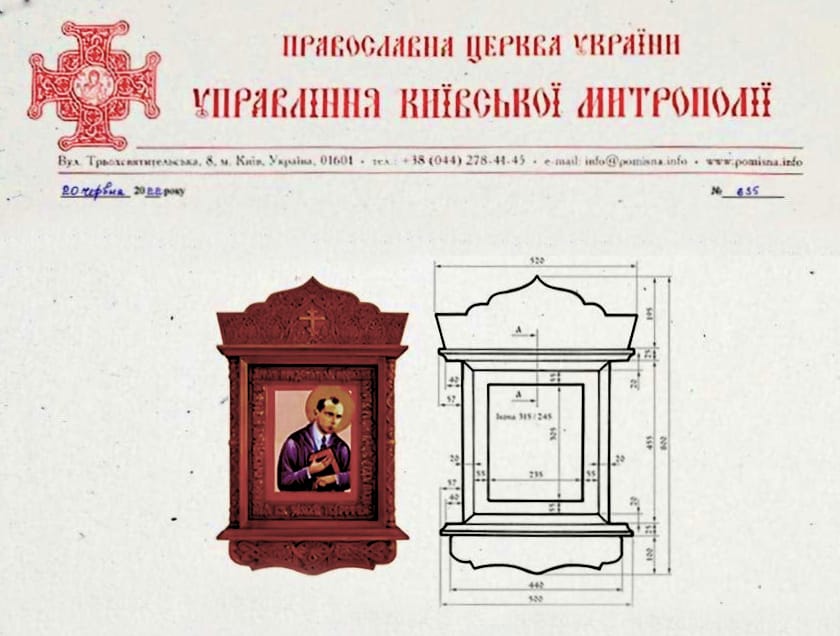The news spread across the Internet that the Orthodox Church of Ukraine allegedly canonized Stepan Bandera. We have checked whether these reports are true.
June 20, 2022 Media, Telegram channels And users Social networks began to spread the news about the canonization of Stepan Bandera. The messages are accompanied by a photo of the decree on the canonization of Bandera with the signature of Metropolitan Epiphanius of Kyiv and All Ukraine. The document says that the decision on canonization was made on June 20, 2022 at the Bishops' Council of the Orthodox Church of Ukraine (OCU).
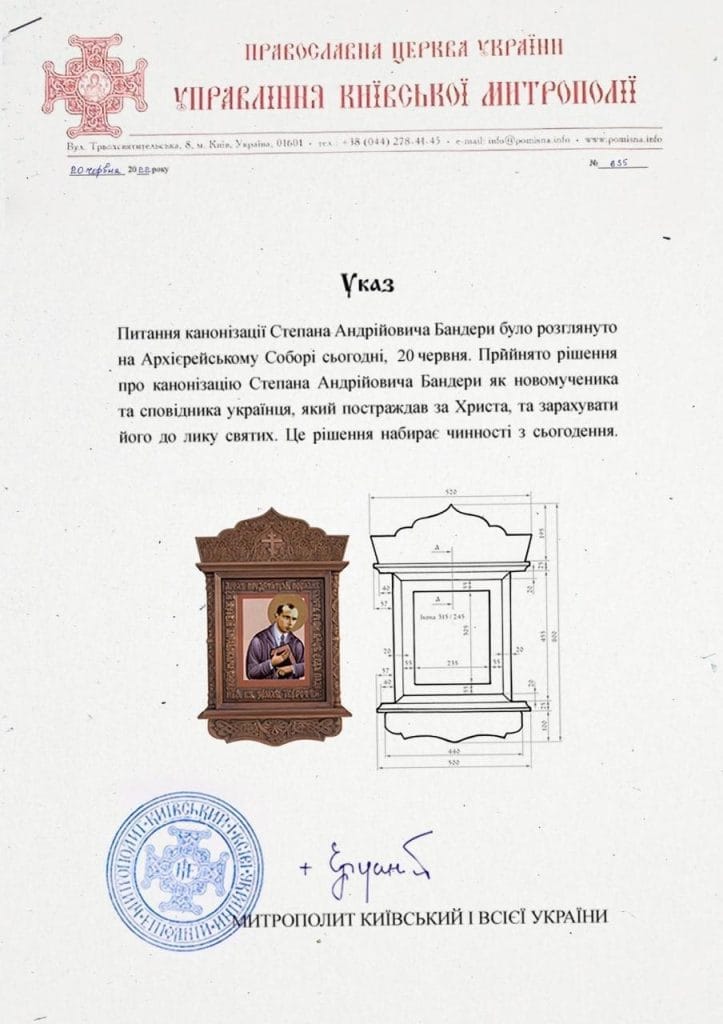
The published document, like the news itself, immediately raised many questions. One of the first to draw attention to the inconsistencies in the document was Andrei Kuraev, protodeacon of the Russian Orthodox Church, deprived ordination in 2020 by the decision of the diocesan court. In his LiveJournal, Kuraev published fast with the headline “Orthodox priests today are scaring each other with this fake.” Kuraev noted several implausible details: “And they don’t care that councils issue acts, not decrees, and that the size of the icon is not indicated in any act of canonization. And it’s not at all difficult to find the website of the OCU and not find such a decree and such a council there.”
Indeed, on the official website of the OCU in section, dedicated to the Councils of Bishops, there is no information about the council on June 20, 2022. The dates for the last four councils are December 2018, December 2019, December 2020 and May 2022. Judging by the attention the press service of the OCU pays to each of the annual councils, it is unlikely that the event on June 20 could have gone unnoticed. There is no news on the website about the canonization of Stepan Bandera, although usually the press service publishes materials on the canonization of new saints.

Resource “Spiritual Front of Ukraine” paid attention to the fact that Stepan Bandera was a Greek Catholic and cannot be canonized by the Orthodox Church. But this nuance did not bother the Russian media, which written off this is about the general absurdity of the decisions of the “Ukrainian regime”, but not about the possible fakeness of the document.
If you read the text of the decree, you can find several stylistic errors.
- The author of the document writes “protect him to the rank of saints,” speaking about elevation to the rank of saints. The verb “zarahuvati” means to count something (for example, experience). In official regulations The OCU uses the phrase “canonized,” that is, “ranked.”
- “Gaining rank from today” is translated from Ukrainian approximately as “comes into force from the present” or “from the present.” From “today” would be “from today”.
- In decrees used imperative mood and describes the items that require fulfillment. And the document about Bandera only informs about the decision made.
The next group of errors concerns the formalities of the canonization process and the execution of such documents.
- Usually saints are canonized resolution The Holy Synod of the OCU on the recommendation of the Synodal Commission for the Canonization of Saints. However, in the document about Bandera, the canonization commission is not mentioned, and the decision was allegedly made at the Council of Bishops, and not at a meeting of the Holy Synod.
- Another shortcoming is the writing of the title of metropolitan in the signature. In all the official ones we found documents it is written “Metropolitan of Kiev and all Ukraine, Primate of the Orthodox Church of Ukraine.” The document about Bandera only indicates the first half of the title.
- The seal also does not correspond to the one that is put on the metropolitan’s signature. And the signature in the decree itself is slightly different from the original signature that can be found on official documents.
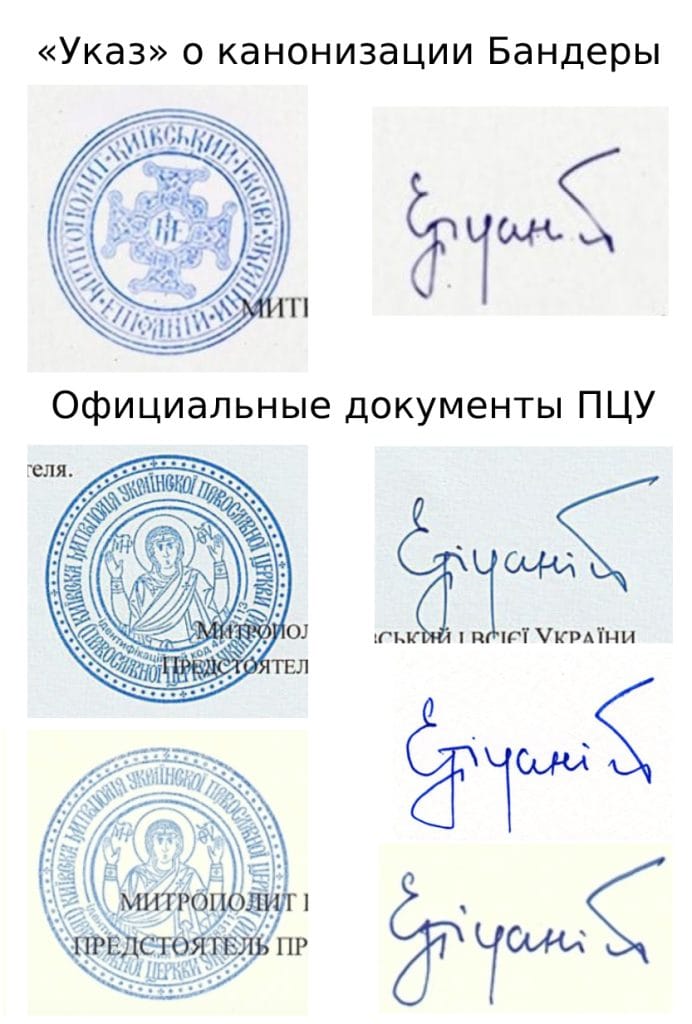
- The serial number of the decree - No. 635 - also raises doubts. The decrees of Metropolitan Epiphany that we found for April 2022 have serial numbers 11 (for April 11) and 22 (for April 25). To collect more than six hundred decrees in two months (from April to June), the metropolitan would need to issue 10 decrees per day.
The sketch of the icon of St. Bandera turned out to be a collage of three images. We managed to find a drawing and a wooden frame at website Sverdlovsk woodcarver Igor Ilyin. The icon itself - Job American icon painter William Hart McNichols 2008. The original icon depicts a blessed martyr of the Roman Catholic Church Franz Jägerstätter, whose head was cut off by the authorities of Nazi Germany for refusing to serve in the Nazi army. Bandera's face is most likely taken from articles about Bandera on Wikipedia.
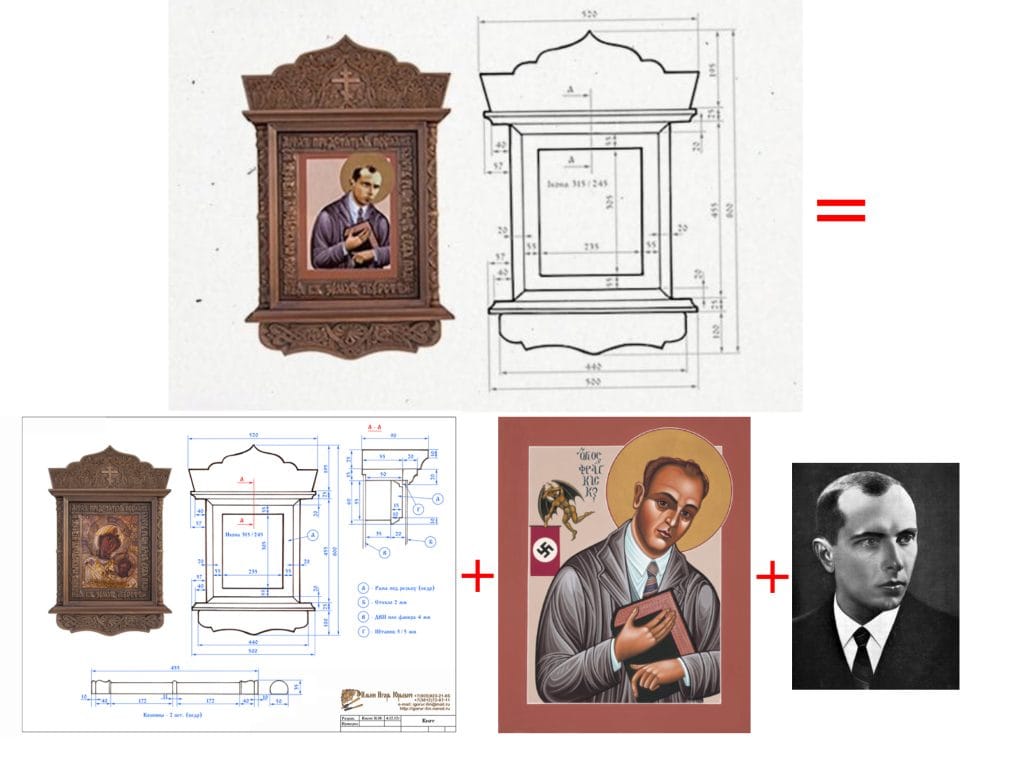
And finally, digital analysis The image showed that some elements were pasted in a photo editor (for example, printing).
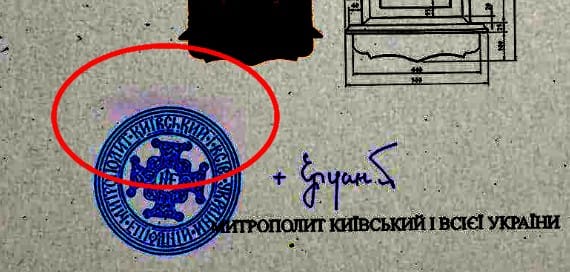
Finally, it is worth mentioning that the press service of the OCU gave a comment to the Ukrainian fact-checking portal StopFake, calling the news about Bandera’s canonization fake: “Crude editing was used to create this picture, and its content is absurd and illiterate from the point of view of the language and traditions of canonization. Even its very form of writing, as well as its content, directly indicate a fake.” Thus, there is no doubt that the news about the canonization of Stepan Bandera and the document attached to it are fake.
Fake
Read on the topic:
- Is it true that the condition for Ukraine’s accession to the EU is a refusal to glorify Bandera?
- "Russian newspaper". 6 Soviet-era Orthodox saints
- "PostScience". Progress of the canonization process
- StopFake.org. Fake: Stepan Bandera was “canonized” - OCU document
If you find a spelling or grammatical error, please let us know by highlighting the error text and clicking Ctrl+Enter.


